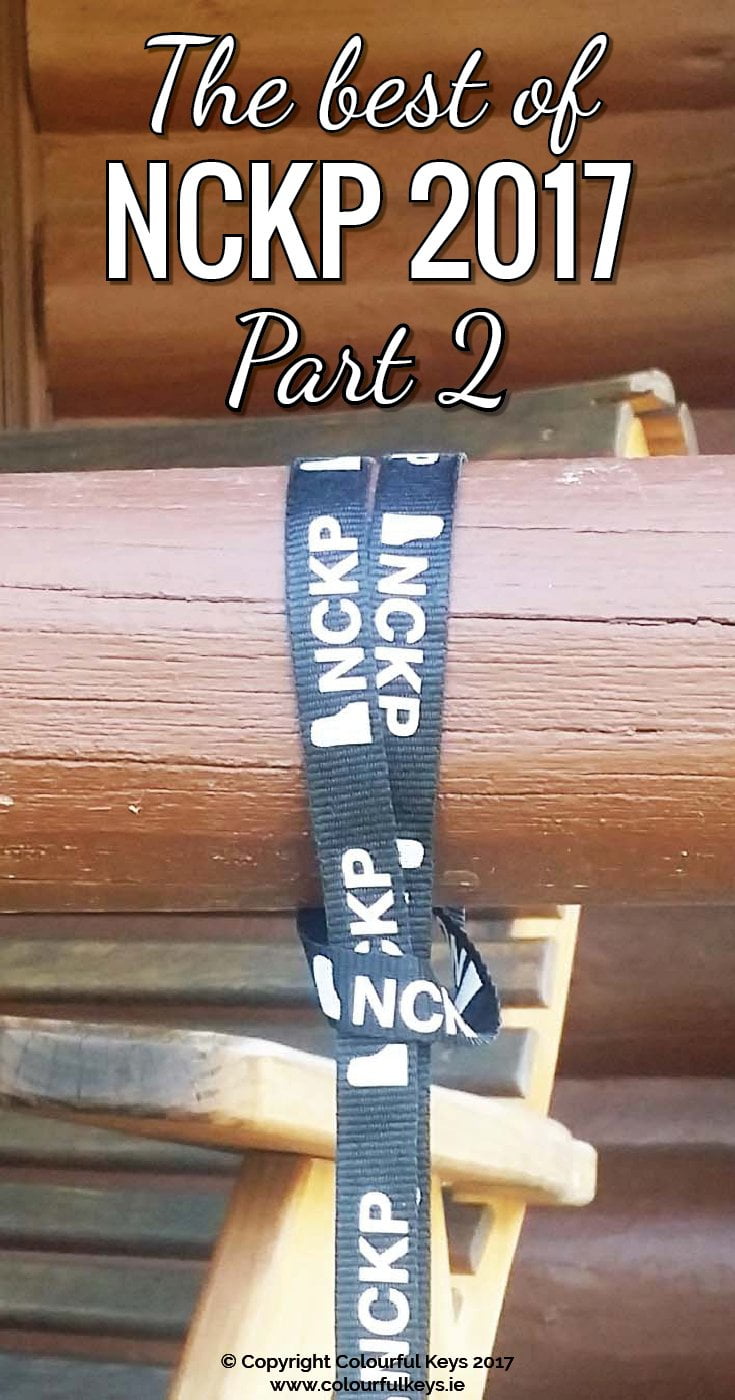I was delighted to see an entire track of NCKP 2017 dedicated to teaching students with special needs. Making our studios more inclusive is something I’m very passionate about.

As Sam Holland said, the biggest complaint from teachers at NCKP is that they can’t make it to everything. With some careful planning though, I did manage to get to three of the sessions on special needs – and I’m so glad I did.
Technology
‘Integrating Technology in the Piano Studio for Children with Special Needs’ was the first workshop I went to at NCKP 2017.
Kaitlin Cooper compared different apps, discussing who they might be used for based on the graphics style and amount of gamification involved.
One interesting point of difference that I hadn’t thought of was whether the app showed the mistakes made so far. As Kaitlin said, many students will be so bothered by this that they will insist on restarting the game each time they make a mistake.
Kaitlin also talked about the lesson planning that goes into her selection of a app for a student. She always makes sure to know what she’s targeting, where it will fit in the lesson, and how they can transfer this to the keys.

It’s this last part that I found really valuable. Your “average” student might do this intuitively, but many students with special needs often need an activity that directly relates the theory concept back to the piano.
This could be as simple as bringing the app to the keys and explicitly pointing out the relationship, or it could be switching from note name mode to piano mode if the app does that. I think this is a great tip that’s super easy to implement.
Managing Behaviour
The next workshop in the special needs track was ‘Preventing and Managing Challenging Behaviours in the Piano Studio’ by Michelle Bastien.
Michelle works in behavioural instructional support in a school – and happens to have a piano teacher as a sister – so she did an excellent job of relating her expertise to the private studio setting.
The biggest takeaways for me were:
- Punishment is not a framework – teaching good behaviour should be treated the same way as teaching anything else.
- The use of visuals such as first/then, if/then and when/then boards.
- Anxiety feeds anxiety so take extra care to keep your voice calm and steady when you sense your student is stressed.
- Rearrange your environment to suit your student – remove all obstacles to good behaviour such as distractions or things a student might be tempted to throw or fidget with.
All of the tips Michelle shared focussed not on what the student was doing but how the teacher could modify their own behaviour in these practical ways to alleviate the potential for the challenging behaviours in the first place.
Teaching Demonstration
I learnt so much from Scott Price’s interview on Tim Topham’s podcast, so when I saw his workshop on teaching students with ASD on the program – I knew it would be something special.
What I didn’t realise was that he was bringing one of his own students with ASD along with him. What an amazing lesson this was to witness.

Scott’s student played beautifully, musically and with such joy. All the while he played Scott was coaxing him along with little nudges in his calm, even voice. If you didn’t know what you were looking for, you might have missed these short phrases that made his teaching so wonderful.
Some of the most common phrases he used to encourage and direct attention were:
- “Touch the keys before you need them”
- “Fingering”
- “Notes”
- “Rhythm”
- “Strong” (forte) accompanied by a shaped fist
- “Quiet” uttered with a finger to the lips
These simple words beautifully smoothed the playing process for his student, but it wasn’t just the words that mattered.
As Scott said:
“The tone of your voice hits before anything else.”
I would say this comforting voice and reassuring tone was a big part of how his student played so well in such an intimidating situation. A big crowd of teachers, on a strange piano and in a completely new environment could be challenging for a student without the sensory processing issues associated with ASD.
The Student is Just a Student
At the end of Scott’s workshop he said two of the most heartfelt and eloquent sentences that I heard for the whole of NCKP 2017.
“The label informs the pedagogy – the student is just a student.”
Think about this the next time you are apprehensive of taking on a new student with special needs. The student is just a student.
Scott also implored all the teachers present to take just one student with special needs, saying:
“Music aptitude doesn’t discriminate, therefore neither should the teacher.”
If you want to take action but need help with teaching strategies and the confidence to teach these students, read this very comprehensive article on teaching piano to students with special needs. There’s even a downloadable pdf version so you can make notes and highlight as you go.
Questions or comments about these sessions?
Leave them in the comments or find me in the Vibrant Music Studio Teachers community on Facebook.
